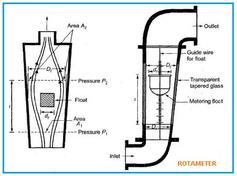Turbine Flowmeter: Advantages and Disadvantages
Advertisement
Turbine flowmeters are devices used to measure the flow rate of fluids. They work by placing a small turbine wheel within a pipe, directly in the path of the flowing fluid. As the fluid moves, it causes the turbine to rotate. This rotation is then used to determine the flow rate. Let’s delve into the specifics of how they work, along with their benefits and drawbacks.
How Turbine Flowmeters Work
At the heart of a turbine flowmeter is a turbine wheel with a permanent magnet embedded inside. This magnet is polarized at a 90-degree angle to the axis of rotation. As the fluid flows and the turbine spins, each blade forms a magnetic circuit with the magnet and a coil. This interaction generates a sinusoidal output voltage, with its frequency directly proportional to the angular velocity of the turbine blade. This frequency is what we use to measure the flow.

Advantages of Turbine Flowmeters
Here are some of the key benefits of using turbine flowmeters:
- High Accuracy for Totalized Flow: Turbine flowmeters are known for their ability to measure the total flow of a fluid with a high degree of accuracy.
- Good Dynamic Response: These meters respond quickly to changes in flow rate, making them suitable for dynamic flow measurement applications.
Disadvantages of Turbine Flowmeters
Despite their advantages, turbine flowmeters also come with some drawbacks:
- Frictional Torque Errors: Excessive frictional forces within the meter can lead to inaccuracies in the readings.
- Wear and Tear and Corrosion: The moving parts within the turbine flowmeter are susceptible to wear and tear, as well as corrosion. This is an important factor to consider for long-term use.
- Not Suitable for Low Flow Rates: Turbine flowmeters are not typically recommended for measuring very low flow rates. This limitation can restrict their applications in certain scenarios.
Advertisement
 T&M
T&M 



